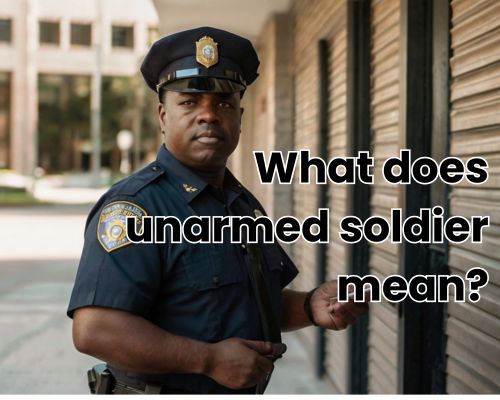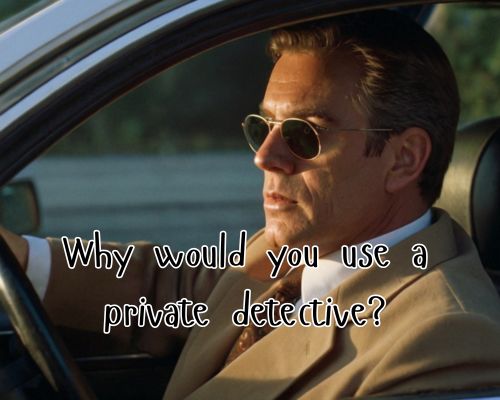When most people picture a soldier, the image is clear: a uniformed individual, armed and ready for combat. But the concept of an unarmed soldier challenges that vision. So, what does unarmed soldier mean, and why is this term growing in relevance, even in communities far from the battlefield, like West Palm Beach, Florida?

In short, an unarmed soldier is not just a contradiction—it’s a symbol of evolving military and peacekeeping roles, the ethics of warfare, and new strategies that reflect 21st-century conflict resolution. Based on Sherlock Holmes from Ali Private Investigator Tampa, understanding this concept demands a deeper dive into military structures, peacekeeping missions, nonviolent resistance, and even local connections to defense-related training and community programs.
The Core Definition: What Does an Unarmed Soldier Mean?
The term unarmed soldier refers to a person who serves in a military or paramilitary capacity without carrying weapons. Often, this role is associated with peacekeeping units, military medics, logistical support teams, or engineers operating in conflict zones under specific rules of engagement that prohibit weapon use.
It can also refer to soldiers who are deployed during non-combat operations, such as disaster relief, evacuation missions, or public safety support where carrying a weapon might escalate tensions rather than ease them.
Interestingly, the concept also crosses into nonviolent resistance movements where individuals—sometimes veterans or service-oriented civilians—take on soldier-like discipline and duties in the pursuit of justice or peace, but without arms. Think Gandhi’s Satyagraha, or the civil rights marches of the 1960s, whose leaders often adopted military-like organization while rejecting violence.
Salient Entities: UN Peacekeepers, U.S. Army, Red Cross, and More
Globally, organizations like the United Nations Peacekeeping Forces deploy personnel as unarmed soldiers. Though some units carry weapons, many operate under mandates that prioritize de-escalation, observation, and civilian protection without the use of force.
In the U.S. Army, unarmed soldiers often serve in roles such as chaplains, combat medics, and humanitarian engineers. While they receive basic combat training, their primary missions are non-combatant in nature. The International Red Cross also works closely with armed forces in conflict zones, often integrating with unarmed military teams to provide aid and relief.
In West Palm Beach, many local veterans have been involved in peacekeeping or support roles overseas. Organizations like the Palm Beach County Veterans Committee frequently highlight stories of soldiers who served in these unarmed capacities, emphasizing the humanitarian side of military service.
For more, just visit https://aliprivateinvestigatortampa.com/.
Local Context: West Palm Beach and the Role of Service Without Arms
West Palm Beach, Florida may seem far removed from active war zones, but its ties to military service are strong. With a significant population of veterans and active service members in Palm Beach County, local events often honor both combat and non-combat personnel.
Programs like Mission United of Palm Beach County support veterans transitioning back into civilian life—many of whom served in unarmed capacities, including combat medics, peacekeeping units, and disaster relief teams. These stories challenge the idea that soldiering must always involve weaponry and highlight the diverse roles service members take on to protect, heal, and support both foreign populations and their own communities.
Additionally, Palm Beach Atlantic University and Florida Atlantic University have hosted forums and public seminars discussing military ethics, the role of unarmed soldiers, and conflict resolution strategies. These discussions reflect a growing local interest in global humanitarian issues, especially among younger veterans and students.
The Psychology and Morality Behind Serving Without a Weapon
From a psychological and ethical perspective, choosing to serve without a weapon can carry immense emotional weight and moral clarity. Unarmed soldiers must rely on diplomacy, quick thinking, and emotional intelligence rather than physical force. In many ways, this makes their role even more complex and risky.
For example, during post-hurricane relief efforts in the Gulf Coast, military personnel—including many from Florida—were deployed unarmed to assist with evacuation, medical care, and infrastructure rebuilding. These soldiers faced logistical challenges and potential threats without relying on weapons, requiring them to practice restraint, community trust-building, and de-escalation techniques.
This approach mirrors a growing belief, even in traditionally conservative military towns like those near West Palm Beach, that modern soldiering includes humanitarianism as much as defense. It’s not about removing strength—it’s about redefining what strength means in an interconnected, fragile world.
Cultural Influence and Representation
Pop culture, too, has embraced the image of the unarmed soldier. Films like Hacksaw Ridge, based on the story of Desmond Doss, a conscientious objector who served as a medic during WWII, helped mainstream this concept. Doss, who hailed from the American South, refused to carry a weapon but went on to save 75 men during the Battle of Okinawa.
Closer to home, local theaters and schools in West Palm Beach have screened similar films and hosted discussions on nonviolence, duty, and the evolving image of the American soldier.
Final Thoughts: Redefining Valor in a Changing World
So, what does unarmed soldier mean in 2025? It means challenging outdated archetypes. It means seeing strength in service, not just in combat. It means acknowledging that in cities like West Palm Beach, young people are growing up with broader definitions of courage—ones that include healing, rebuilding, educating, and protecting, all without a trigger finger.
Whether operating in conflict zones abroad, disaster areas in Florida, or peace missions across Latin America and the Caribbean, unarmed soldiers represent a modern, nuanced answer to global instability. Their bravery lies not in the power to destroy, but in the capacity to preserve.
As we continue to rethink the future of military service and civic duty, unarmed soldiers remind us that true power sometimes looks like compassion under pressure—and that may be the ultimate form of defense.

